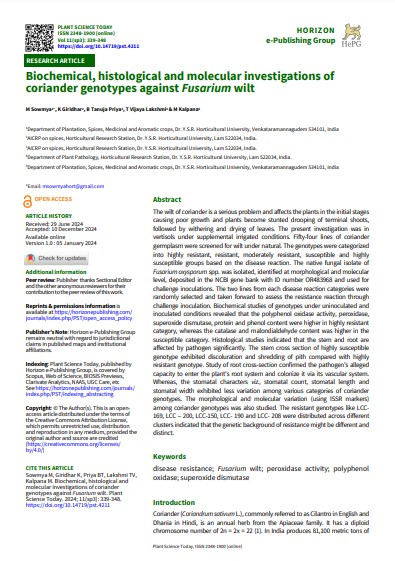Distribution of different deha prakriti among stroke patients- A cross-sectional survey
DOI:
https://doi.org/10.55718/kja.350Keywords:
Stroke, CCRAS, Pakshaghata, PrakritiAbstract
Introduction: Stroke forms the second most common cause of death and third most common cause of death and disability combined (measured by disability-adjusted life years lost -DALYs) globally. Advancements in the medical field over recent years have significantly lowered the mortality rates among patients who have suffered strokes. However the survivors had a high prevalence of disability, that is 101 million people are dealing with the consequences of a stroke globally resulting in 44 million disability-adjusted life years lost annually. Prakriti, a unique concept explained by Ayurveda as the inherent composition of an individual, determines the susceptibility, manifestation, course of disease and an individual's response to treatment. Therefore, Prakriti makes every individual unique in, therapeutic as well as preventive aspects. The present survey aims to determine the prevalence of different deha prakriti among stroke patients.
Methodology: A cross-sectional survey was conducted among 96 stroke patients aged between 40 - 70 years, irrespective of gender, who were admitted to Government Ayurveda Hospitals of Kannur district. Their prakriti was assessed by a standardised prakriti assessment scale from AYU PRAKRITI WEB PORTAL developed by CCRAS New Delhi India.
Results and discussion: Out of 96 participants, 51.3% had kapha predominant prakriti, followed by 27.1% with vata predominant prakriti and 19.8% with pitha predominant prakriti. Kapha predominant Prakriti owing to its guna like mrtsna,sthira,guru, Snigdha etc makes the individual vulnerable to margavarana.
Conclusion: Kapha predominant prakriti was prevalent among stroke patients of Government Ayurveda Hospitals in Kannur district.
References
Health P. World Health Organization (WHO) Definition of Stroke - Public Health. 2020.https://www.publichealth.com.ng/world-health-organization-who-definition-of-stroke/
Global, regional, and national burden of stroke and its risk factors, 1990–2019: a systematic analysis for the Global Burden of Disease Study 2019. Lancet Neurol. 2021 Oct ;20(10):795–820. https://www.ncbi.nlm.nih.gov/pmc/articles/PMC8443449/
Jones SP, Baqai K, Clegg A, Georgiou R, Harris C, Holland EJ, et al. Stroke in India: A systematic review of the incidence, prevalence, and case fatality. International Journal of Stroke. 2022 Feb 1 ;17(2):132–40. https://doi.org/10.1177/17474930211027834
Ram Karan Sharma and Vaidya Bhagwan Dash. Agnivesa‟s Charaka Samhita text with English translations and critical exposition based on Chakrapanidatta‟s Ayurveda Dipika. Reprint edition. Chaukhamba Krishnadas Academy.Varanasi, 2007.Volume I, Sootra Sthana.Chapter 20/9.P.no:156
Alternative Therapies for Stroke Treatment in Asia - Jeyaraj Durai Pandian, Ming Liu, Jusuf Misbach, N. Venketasubramanian, 2011 https://journals.sagepub.com/doi/abs/10.1111/j.1747-4949.2011.00680.x
Prof.K.R.Srikanta Murthy.Vagbhata’s Ashtanga Hrudayam Text with English translation, notes, indices.Reprint Edition.Chaukhambha Krishnadas Academy, Varanasi;2013.Volume II, Nidana Sthana, Chapter 15/38-39.P.no.155
Ayurveda and Epigenetics https://www.researchgate.net/publication/347614608_Ayurveda_and_Epigenetics
Ayurgenomics: Bringing age-old wisdom to the healthcare of the future | Council of Scientific & Industrial Research.https://www.csir.res.in/csir-success-stories/ayurgenomics-bringing-age-old-wisdom-healthcare-future





